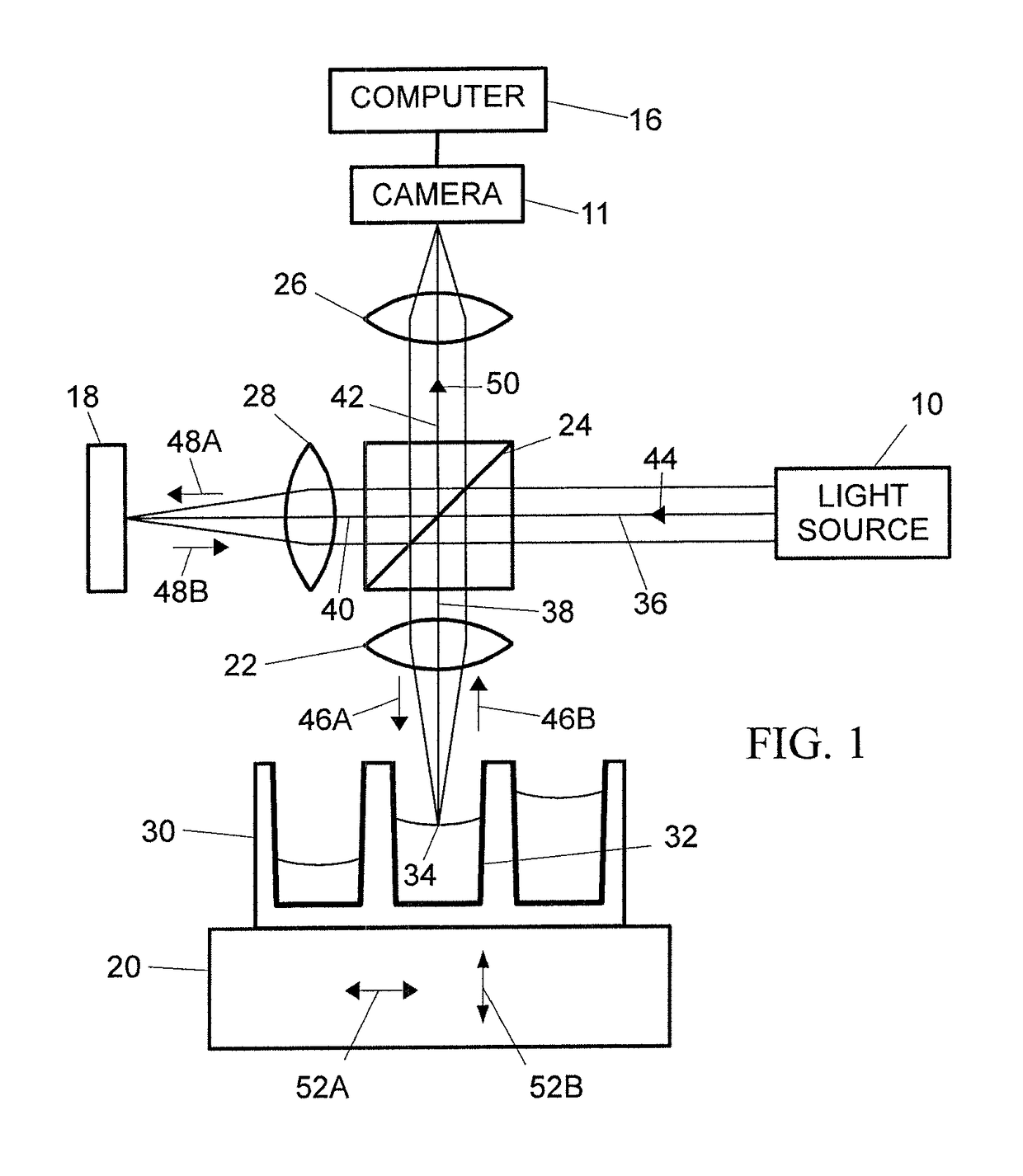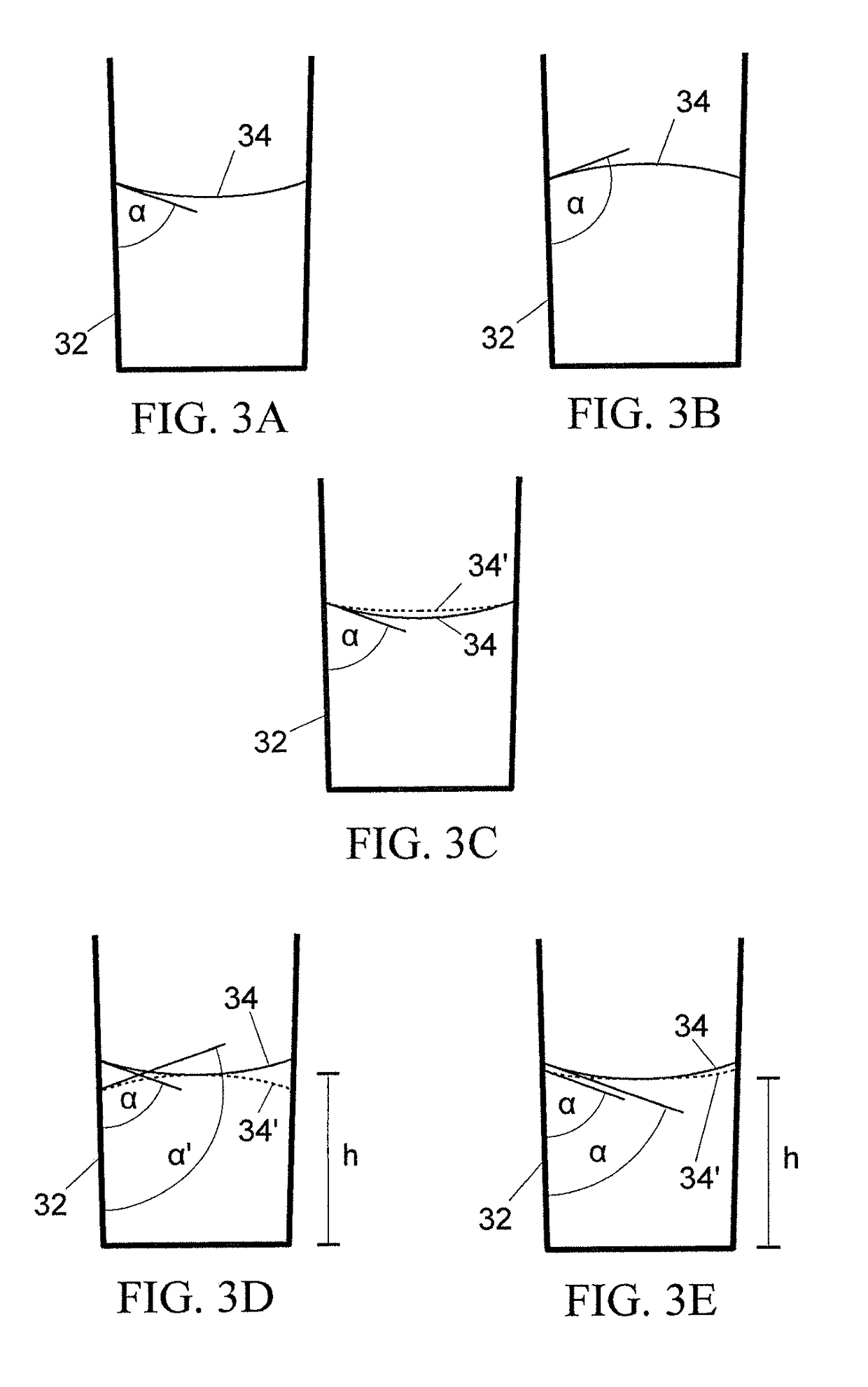Interferometric Measurement of Liquid Volumes
- Summary
- Abstract
- Description
- Claims
- Application Information
AI Technical Summary
Benefits of technology
Problems solved by technology
Method used
Image
Examples
first embodiment
Operation of First Embodiment
[0120]Camera 11 acquires a sequence of images. Between images, the optical path length difference between the sample and reference arms of the low-coherence optical interferometric ranging system is incremented. To that end, the difference between the optical path length of beam 40 and the optical path length of beam 38 is altered by vertically translating microplate 30 in the direction indicated by arrows 52B using translation stage 20. In an alternative embodiment, the reference mirror 18 could be translated relative to the beam splitter along the optical axis of beam 40 instead. If microplate 30 is translated relative to the detector, care is taken to ensure that the sample remains sufficiently in focus. For the short coherence lengths on the order of 10-20 μm of typical broadband light sources 10 suggested here, the maximum scan range that is needed to record an interferogram is much smaller than the working distance of the imaging lens (typically 25...
second embodiment
Operation Second Embodiment
Light Source and Optical Path Length Modulation
[0153]Light source 10 is operated in such a manner that it emits light of an intensity that remains substantially constant with time. A periodic electrical signal is applied to piezo-electric fiber stretcher 66, which causes it to periodically change the length of the optical path the light in the reference beam traverses. As an example, a triangular waveform may be applied. The frequency of the triangular waveform depends on the needs of the experiment and the characteristics of piezo-electric fiber stretcher 66. In particular, it determines an upper limit on how many elevation scans the instrument can perform in a given period of time. A frequency of between 200 and 2000 Hz is one suitable frequency range for the fiber stretchers used here. As an example, to measure the liquid fill height in a typical well 32 in a microplate 30, the following steps are taken. In order to measure the elevation of a point on t...
PUM
 Login to View More
Login to View More Abstract
Description
Claims
Application Information
 Login to View More
Login to View More - R&D
- Intellectual Property
- Life Sciences
- Materials
- Tech Scout
- Unparalleled Data Quality
- Higher Quality Content
- 60% Fewer Hallucinations
Browse by: Latest US Patents, China's latest patents, Technical Efficacy Thesaurus, Application Domain, Technology Topic, Popular Technical Reports.
© 2025 PatSnap. All rights reserved.Legal|Privacy policy|Modern Slavery Act Transparency Statement|Sitemap|About US| Contact US: help@patsnap.com



